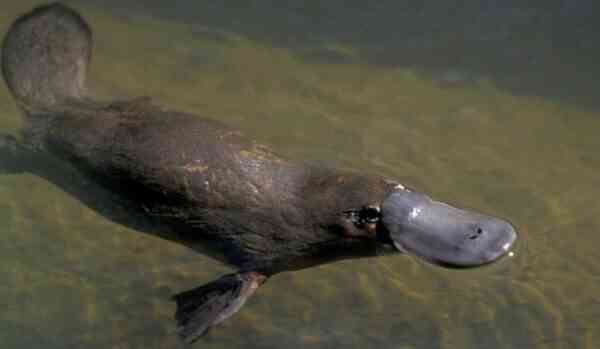The bizarre creatures of the platypus are actually a relic form of life that survived in Australia due to the isolation of this mainland from the rest of the world. Scientists are still scratching their heads how they managed to go through so many eras, because on other continents all related species have long since died out. And the modern public considers platypuses to be very cute and funny animals, which, by the way, is not far from the truth.
Interesting facts about platypuses
- Their closest biological relatives are echidnas.
- Biologists and zoologists say that in a number of ways, platypuses are close to reptiles, no matter how strange it may sound.
- People in Europe believed in the existence of platypuses only when they were shown a live animal. All the skins of these animals delivered from Australia were taken for a fake, since the scientific community of those years categorically rejected the possibility of the existence of such creatures.
- Platypuses live only in Australia, and are not found anywhere else in the wild (interesting facts about Australia).
- The image of this animal can be seen on a coin of 20 Australian cents.
- The first scientists who dealt with platypuses at the beginning of the 19th century initially attributed them to the genus of moles. Their further study showed that this was a mistake.
- Being mammals, platypuses, like birds, lay eggs, and the cubs hatched from them are fed with milk. Scientists have been arguing for 27 years about whether they should be classified as mammals, birds or reptiles.
- Sexual dimorphism in these animals is expressed mainly in size – males are about a third larger than females.
- The weight of an adult platypus does not exceed 2 kg, and the body length is 30-40 cm.
- Unlike birds, the beak of these amazing creatures is not hard, but soft. It consists of two arched bones, on which the skin is stretched (interesting facts about birds).
- Platypuses store fat in their tails, similar to beavers.
- Among all the mammals of the world, their metabolic process is the slowest. At the same time, platypuses can control it at will. If they need to keep warm, they speed up their metabolism by 2-3 times.
- Male platypuses are poisonous, but their poison is not dangerous for humans. At the same time, it is contained in the spurs on the hind legs, and not in the mouth, as in reptiles. And females do not have these spurs at all.
- Platypuses are one of two species of mammals on Earth that can perceive the electric fields of other living beings.
- They live only in fresh water. They cannot survive in salty waters.
- Female platypuses do not have nipples, so the milk after excretion flows directly over the wool, and the cubs lick it off.
- Young platypuses have teeth, whole 8 pieces, but they quickly wear out, and they are replaced by keratinized plates.
- And these animals have as many as 10 sex chromosomes, and not 2, like most other mammals.
- Platypuses spend almost half of their lives in water. They usually hunt crayfish and other river animals.
- Despite the fact that they live in a warm climate, every winter platypuses fall into a short hibernation, which lasts about 1 week. After hibernation, they have a mating season.
- The diameter of the eggs that platypuses lay usually does not exceed 1 centimeter.
- Under water, they do not see or hear anything, and also do not smell. But they feel the electric fields that arise when potential prey, for example, strain their muscles, and hunt by focusing on them.
- It is almost impossible to see the platypus during the day, as they are nocturnal.
- In order to grind food in their mouths, they sometimes use pebbles that are collected in their cheek pouches.
- Unlike most marine animals, platypuses use their front legs instead of their hind legs to swim. At the same time, the rear ones act as a steering wheel.
